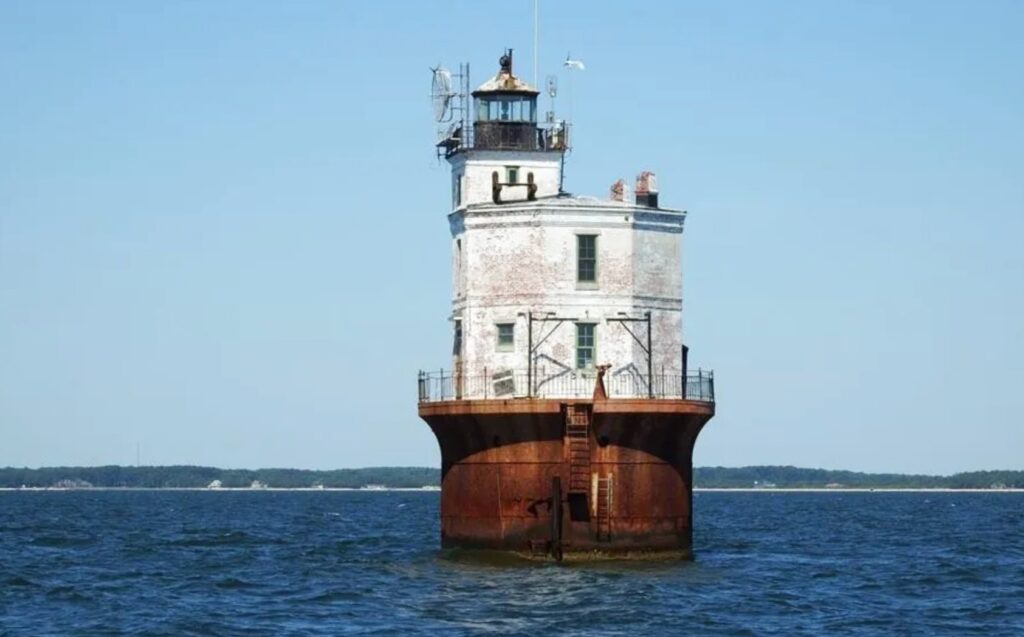HEAR THIS STORY ON THE RADIO: We spoke to D.C. region radio station WTOP News about this unique lighthouse, still for sale as of May 28, 2024. Would you make it your next Bay getaway?
Real estate agent Beth Groner accepts plenty of referrals through her work with the Keller Williams Agency in Reedville, Virginia. But an offer to represent the owner of a Chesapeake Bay lighthouse was a new one.
“The owner purchased the lighthouse directly from the General Services Administration’s Lighthouse Program through an auction back in 2005,” she says. “He would come out for the first four or five years, renovating it, trying to get it into a liveable state.”
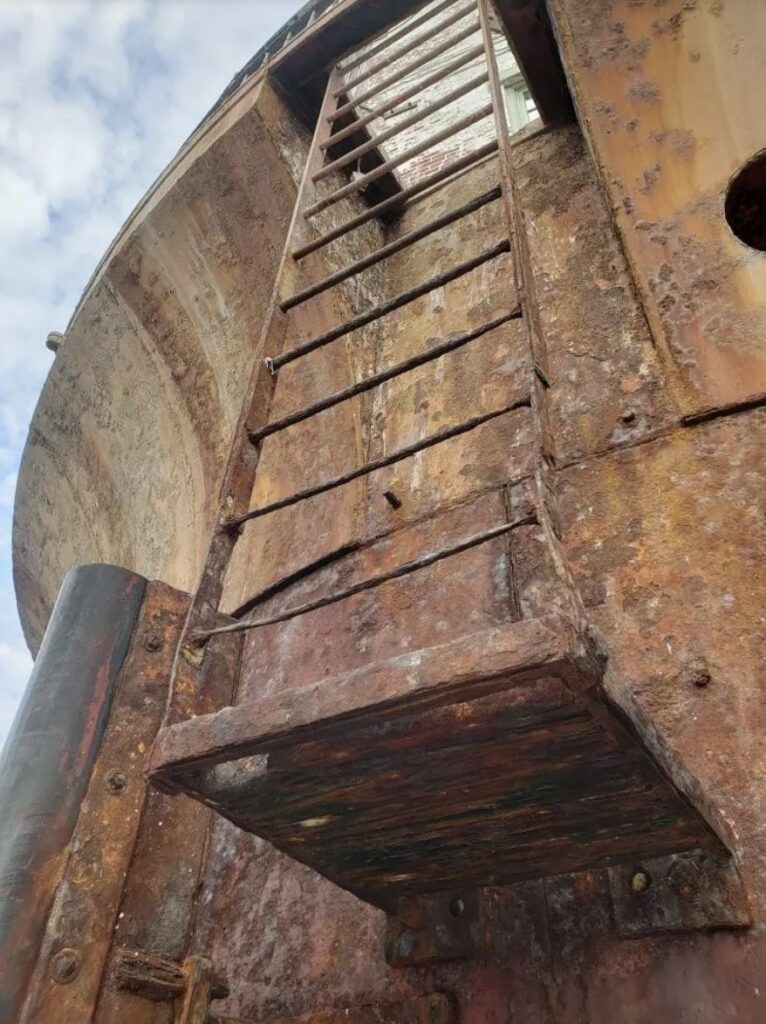
She’s talking about David McNally, the owner of a construction company (among a lumber yard, a rental company, and other things) in Minnesota. McNally has no ties to the Chesapeake Bay—his office overlooks the Mississippi River. So how did he come to own a lighthouse?
“I bought it on a quirky day,” he says. “I was at home, sick, and my young son was bugging me. So, I said to him, ‘Go online and find some lighthouses for sale.’ And sure enough he found about eight of them.”
McNally had always dreamed of owning a lighthouse, but he hadn’t considered making his dream a reality. Looking at the list, he narrowed his interests down to Smith Point Light and Wolf Trap Light, both caisson lighthouses in the Virginia portion of the Chesapeake Bay. (Wolf Trap Light was, itself, recently sold. Here’s a sneak peek inside!)
But when McNally was shopping back in the mid-2000s, upon inspection he realized Wolf Trap’s roof had a 10-foot hole in it and needed extensive work. So, he bought Smith Point for roughly $180,000.
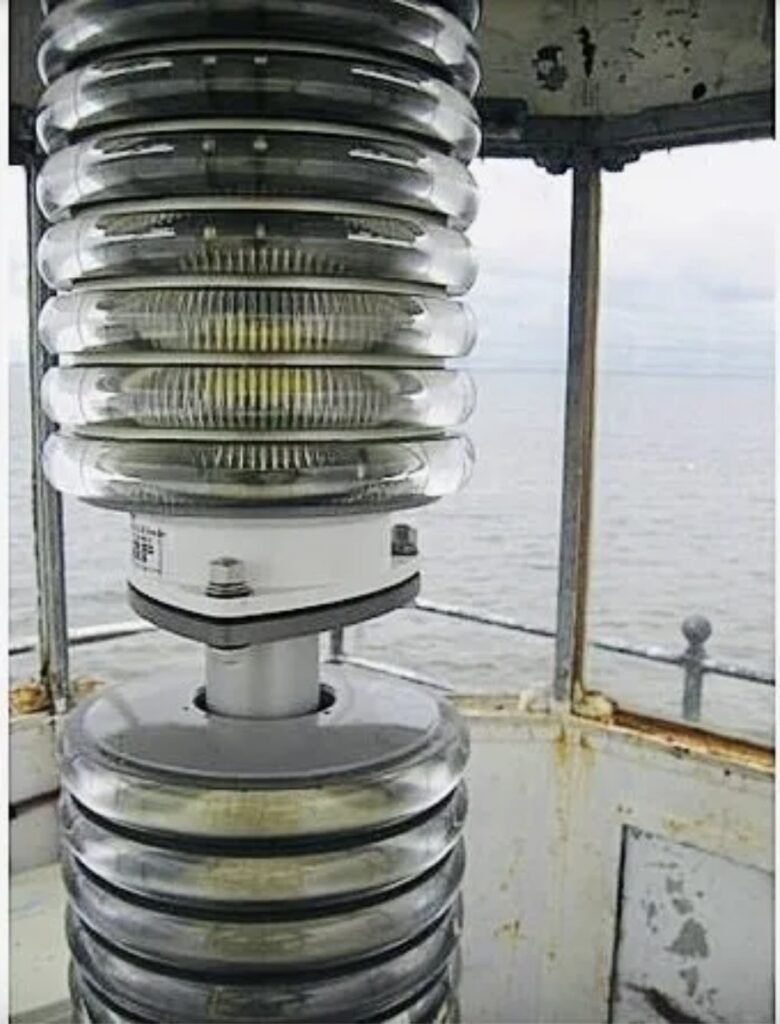
“We bought the light in December and toward the end of January, the Coast Guard took us out by boat,” he says of his first trip. “It was a very nice, sunny January day, so naively I thought, ‘every day must be nice on the Chesapeake.’ I found out later that it’s not quite true.”
The lighthouse needed repairs before McNally’s family could even consider visiting. The original Smith Point Light was in 1802, while the current light was built in 1897. “Minnesota hasn’t even been a state for that long,” he says. To get demolition and repairs started, he bought a 24-foot Carolina Skiff from a boatyard in Reedville and hired a work crew from his Minnesotan contacts and began week-long trips to renovate the house.
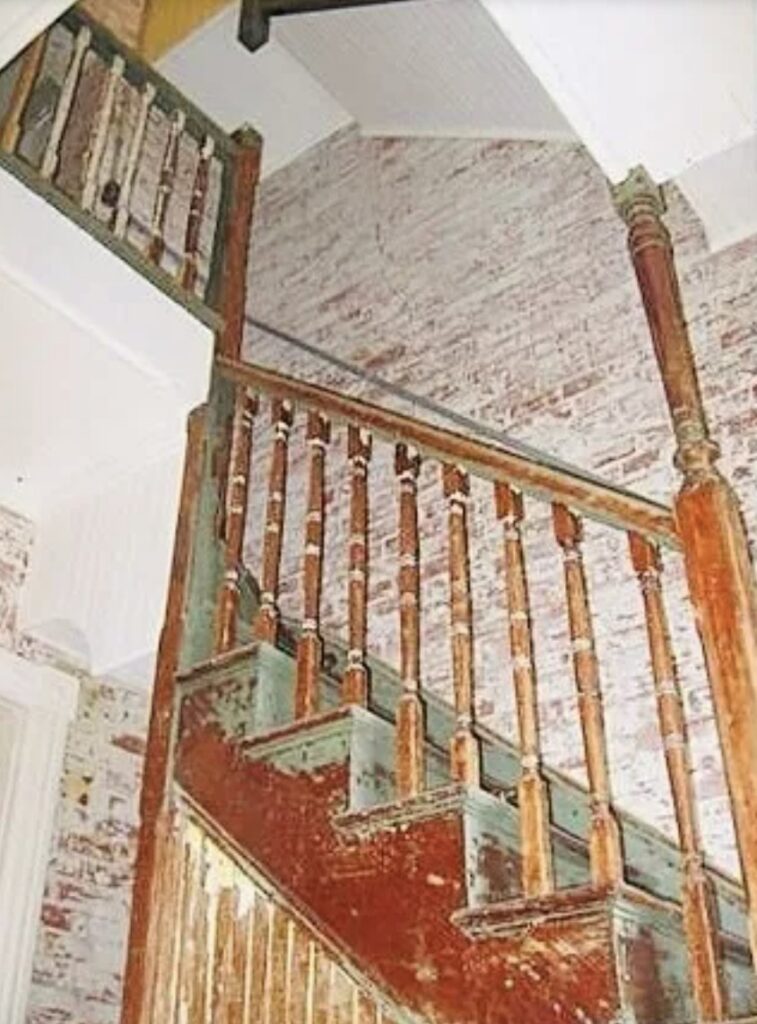
Listed at $450,000, McNally’s lighthouse is priced significantly higher than other lighthouses that have more recently gone on the GSA’s auction block, but when one considers the exceptional amount of work he’s put into its renovation, this makes sense.
“It was quite an experience,” he says. For the first year, all he did was demolition and renovation. “Everything had to be taken out there new, and everything old had to be taken back in and disposed of properly. I’d bring a good-sized truck out every time, with a crew of three to eight guys. I’d take a good-sized truck full of everything new, and take the debris back with me to Minnesota and get rid of it.”
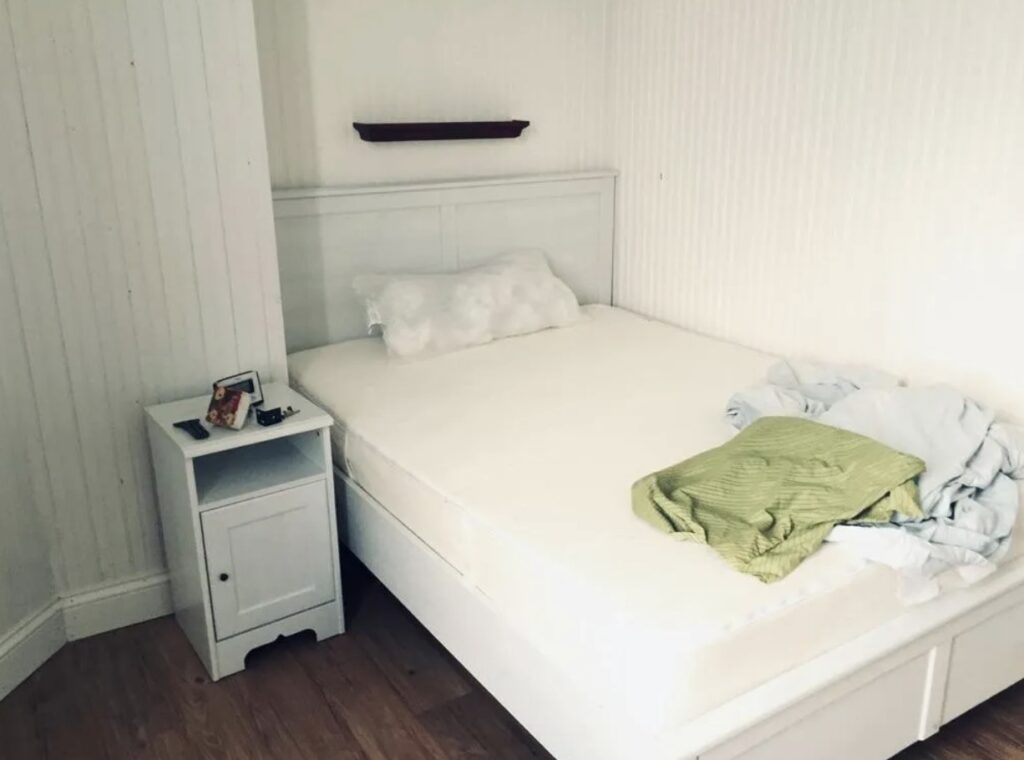
McNally made a trip to Philadelphia, where he received the lighthouse’s original plans from the National Archives. The first year was slow going, with his crew initially being ferried back and forth to land before a camp-like existence was possible. “It was definitely a guys’ cabin until we got it done,” he says.
The light was originally powered by a cord that extended from Reedville. The cord powered the light—and the fog horn.
“When I first bought it, they had a fog horn that would go off every 17 seconds, 24 hours a day, seven days a week. Even when there was no fog.”
As renovation progress was made, McNally’s family started coming out to spend time in the lighthouse. His first order of business was to stuff washcloths and towels in the fog horn to muffle the sound. Several years into their ownership, the cord connecting the light to land was jeopardized, and the Coast Guard switched to solar power. The fog horn was deemed unnecessary.

McNally and his young family began to spend summer vacations in the lighthouse, furnishing the space and making it a comfortable vacation home for their family. Fourth of Julys were particularly special. “On a beautiful, quiet July night, you can hear the blow holes of the dolphins as they swim by,” he says. “That’s how quiet it is out there.”
McNally has lovingly restored the lighthouse and enjoyed it for the last 20 years. But now, it’s time for a new owner; someone with a sense of adventure, and some capital.
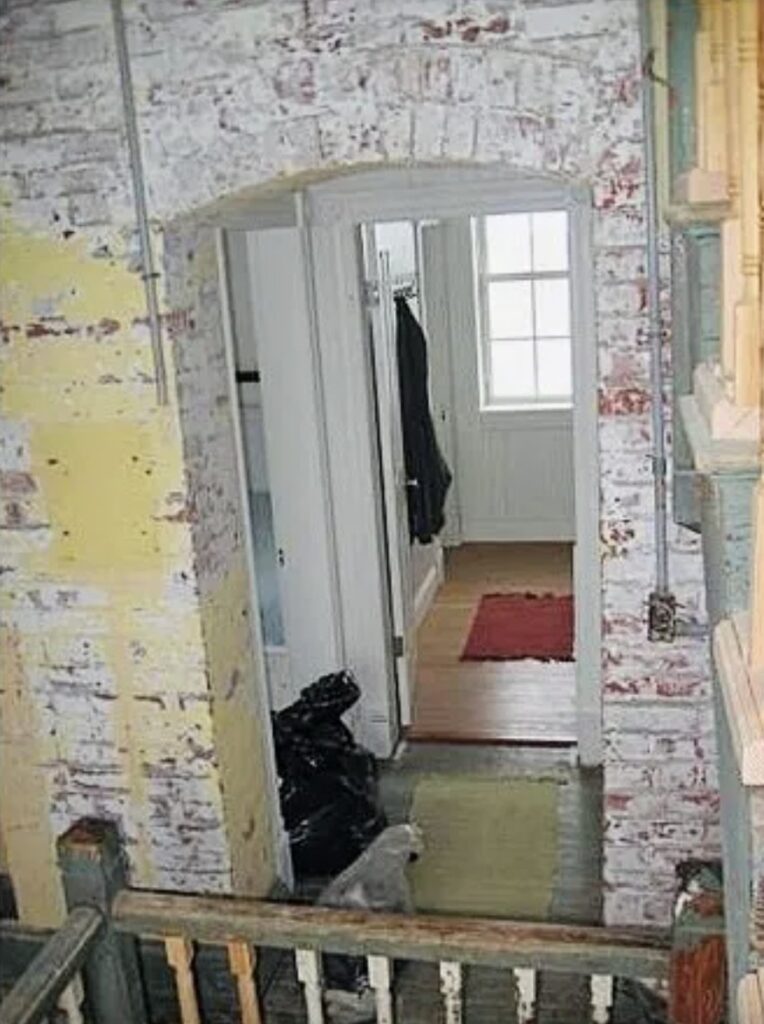
The listing necessitates cash-only offers due to the challenges in insuring the property. “ There are challenges to financing something like this,” Groner says. “Banks won’t finance a historic property in the middle of the Bay. This isn’t your typical homeowners’ policy.”
Thankfully, McNally’s repairs will shoulder a significant amount of that intimidation. He’s installed a full kitchen with cherry cabinetry, standard appliances, and a breakfast counter. There’s a full bath and shower stall along with three bedrooms on the second floor and a fourth bedroom located in the watch room. New waterproof vinyl flooring accents the original brick walls and trim, and a new plumbing system, A/C units, wastewater treatment system, and generator keep the place running smoothly. Groner notes that the exterior railings will need to be secured, and the door to the watch room will need to be replaced after a guest left it open and caused damage.
With its historical significance and McNally’s extensive renovations, the next caretaker will be accepting something truly special. “I think if you’re one of those people who have a passion for the idea of it, and bringing the lighthouse back to life, it’s a very special place,” Groner says.
McNally agrees.

“I’ve got no neighbors,” he says. “I don’t have an address. All I have is a longitude and latitude. I think I had a romantic notion that I wanted to buy a lighthouse, and I had the ability to buy one, so I did. I had a 20-year run with it, and it’s been the best time of my life. You haven’t had an adventure until you’ve owned a lighthouse.”
You can read more about the Bay’s privately owned lighthouses in our Chesapeake Bay Magazine 2024 Launch Issue.

